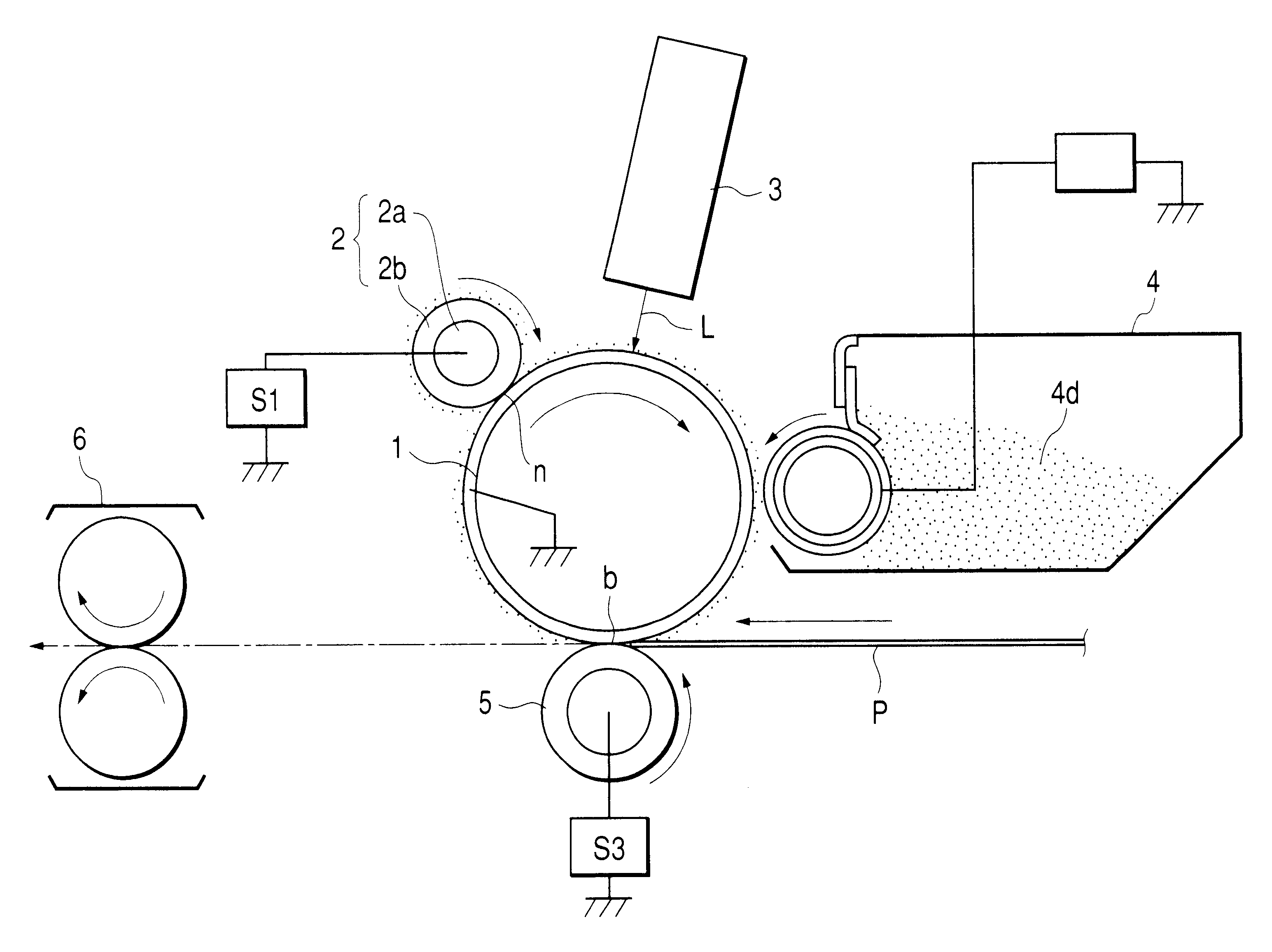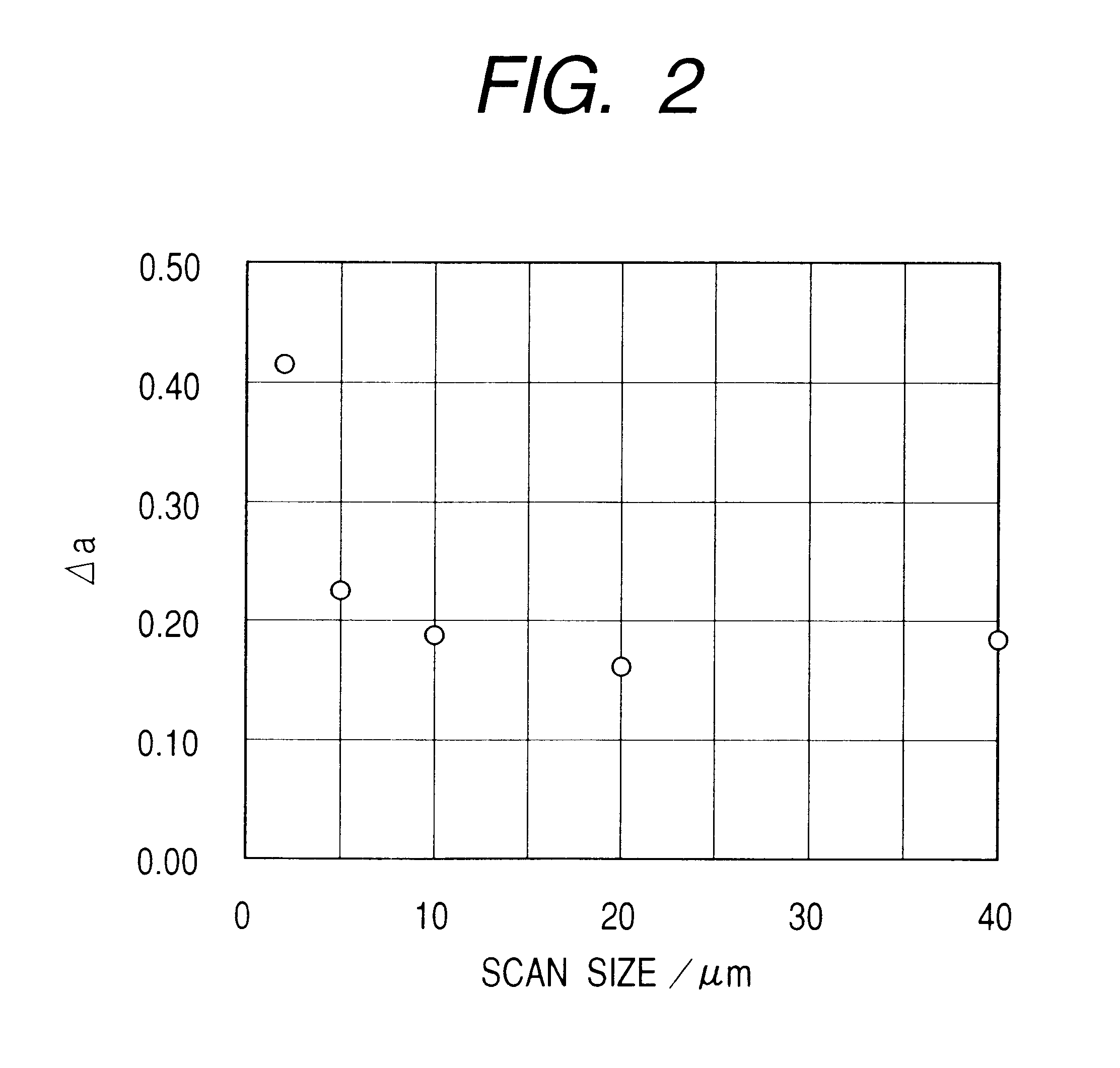Photosensitive member and image forming apparatus having the same
a technology of image forming apparatus and photosensitive member, which is applied in the direction of electrographic process apparatus, instruments, corona discharge, etc., can solve the problems of forming stripe patterns (interference fringes) on printed images, difficult to remove residual toner, and black or white spot image defects
- Summary
- Abstract
- Description
- Claims
- Application Information
AI Technical Summary
Benefits of technology
Problems solved by technology
Method used
Image
Examples
experimental example 1
While modifying a forms of a substrate and the parameters of the manufacturing conditions with the above described a-Si photosensitive member film forming apparatus, there were manufactured electrophotographic photosensitive members Nos. 101 through 113 which had different average inclinations .DELTA.a at a measuring level of an AFM and different average inclinations .DELTA.a at a measuring level of a surface roughness meter. Cylindrical substrates made of Al which were used as electrically conductive substrates were subjected to various substrate surface works such as cutting work and dimple work.
Table 1 lists average inclinations .DELTA.a of the photosensitive members Nos. 101 through 113 which were measured within a range of 10 .mu.m.times.10 .mu.m with the AFM, average inclinations .DELTA.a which were measured with the contact type surface roughness meter and results of image evaluation.
In the present invention, the average inclinations .DELTA.a at the measuring level of the sur...
experimental example 2
Then, electrophotographic photosensitive members Nos. 201 through 212 which had different average inclinations .DELTA.a at the measuring level of the AFM and the measuring level of the surface roughness meter and similar photosensitive members Nos. 213 and 214 except that they have no interface were manufactured while modifying the parameters of the manufacturing conditions with the above described a-Si photosensitive member film forming apparatus. Cylindrical substrates made of Al having a purity of 99.9% or higher were used as electrically conductive substrates, which were cut for planished work until microscopic surface roughness Ra was unified not higher than 9 nm.
Table 2 lists average inclinations .DELTA.a of the photosensitive members Nos. 201 through 214 which were measured within a range of 10 .mu.m.times.10 .mu.m with the AFM, average inclinations .DELTA.a which were measured with the contact type surface roughness meter, values of reflection on interface according to equat...
experimental example 3
Then, electrophotographic photosensitive members Nos. 301 through 306 were manufactured using electrically conductive substrates which had different microscopic surface roughness Ra as measured in the range of 10 .mu.m.times.10 .mu.m with the AFM. Cylindrical substrates made of Al having a purity not lower than 99.9% were used as the electrically conductive substrates and film forming conditions were adjusted so that average inclinations as measured with the AFM were approximately 0.15 to 0.30.
Table 3 lists microscopic surface roughness Ra of the electrically conductive substrates of the photosensitive members Nos. 301 through 306 and image evaluation results.
As image evaluation, 500,000 sheets were passed for testing durability with a test pattern at a print ratio of 7% using Electrophotographic Apparatus NP6350 manufactured by Cannon and images were evaluated for improper spots. Referred to as improper spots are abnormal partial growth of a film during formation of a photosensitiv...
PUM
 Login to View More
Login to View More Abstract
Description
Claims
Application Information
 Login to View More
Login to View More - R&D
- Intellectual Property
- Life Sciences
- Materials
- Tech Scout
- Unparalleled Data Quality
- Higher Quality Content
- 60% Fewer Hallucinations
Browse by: Latest US Patents, China's latest patents, Technical Efficacy Thesaurus, Application Domain, Technology Topic, Popular Technical Reports.
© 2025 PatSnap. All rights reserved.Legal|Privacy policy|Modern Slavery Act Transparency Statement|Sitemap|About US| Contact US: help@patsnap.com



